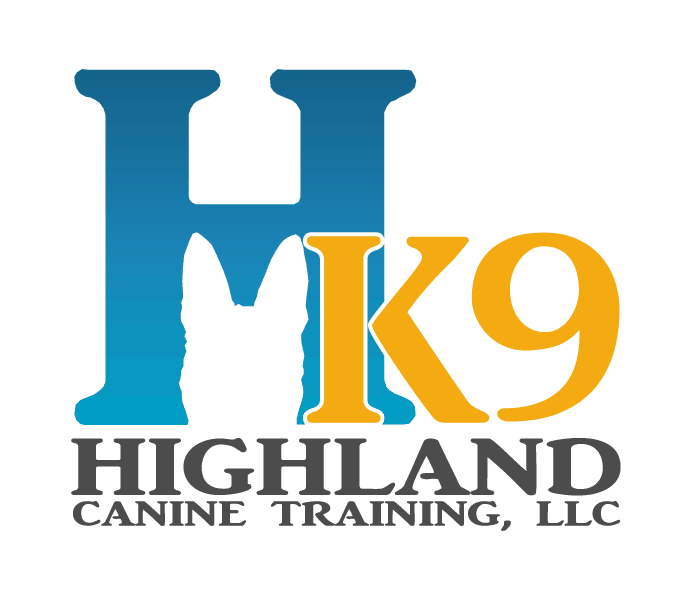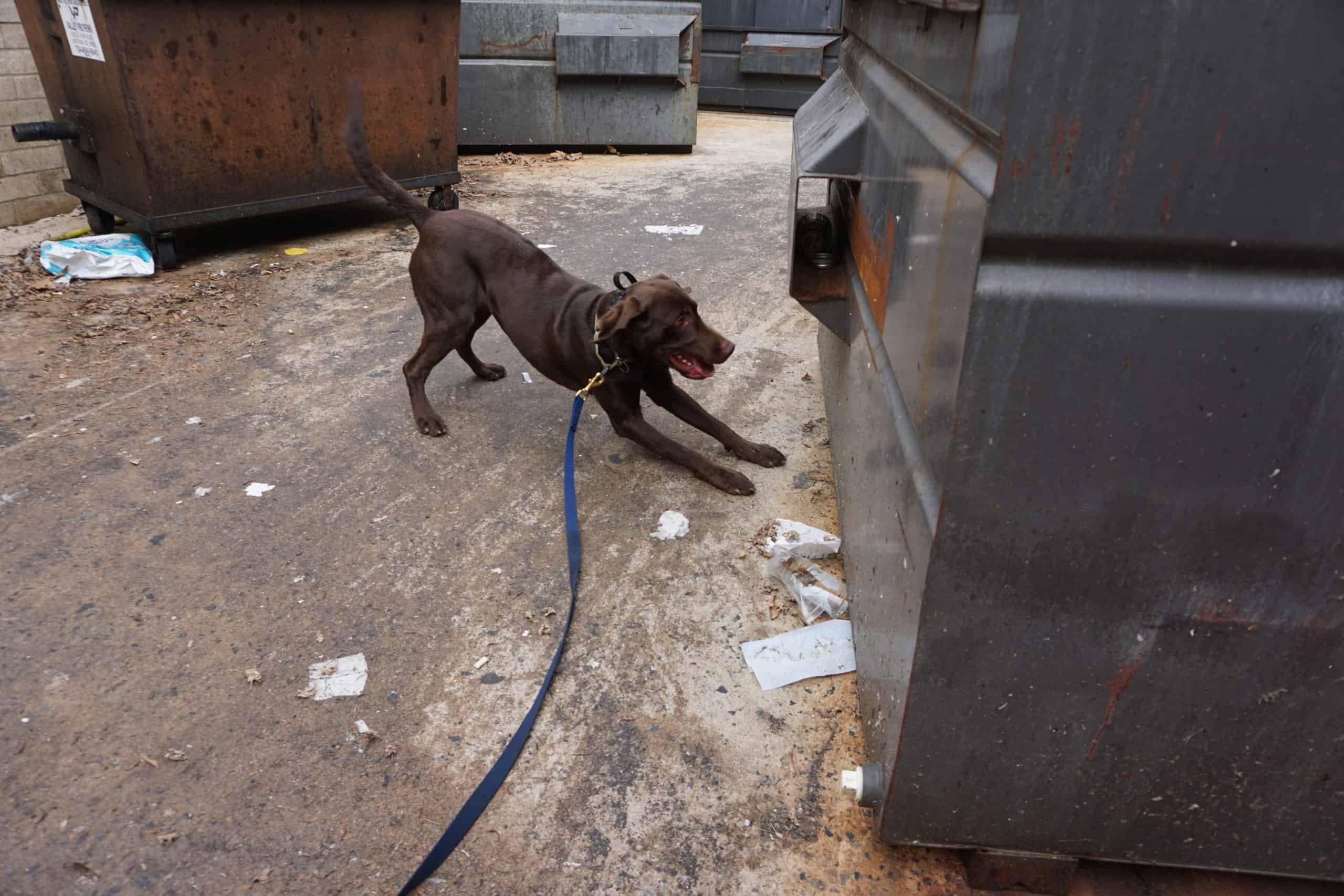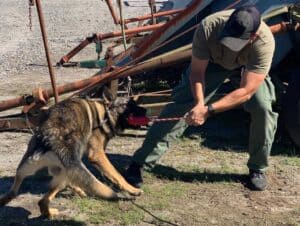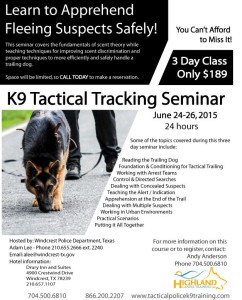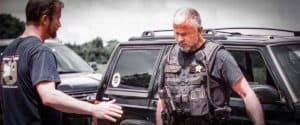Human remains detection (HRD) dogs (also known as cadaver dogs) are an incredibly useful tool for law enforcement units, search and rescue teams and coroners alike. They make possible the locating of critical evidence, necessary to close some of the most heinous cases and bring justice to victims. They also provides many families with the closure necessary to heal when they may otherwise be forced to live the rest of their lives wondering what happened to their loved one. Without HRD K9s, some of the worst cases would go unresolved, which could result in even more innocent lives being unnecessarily lost.
Training an HRD K9 is not a quick process; it requires a great deal of time, dedication and education in order to do it correctly. Cadaver dogs are not just imprinted and trained on decomposition. They must understand that their job is to locate any human remains present, whether they are fresh and sitting on top of soil, or 150 years old and buried under the ground. HRD dogs are expected to find everything from traces of adipocere when a body has been moved or tiny remnants of human remains undiscovered by the human eye, to multiple bodies in a disaster scenario when the environment is saturated with the scent of early decomposition. They are expected to completely ignore animal remains, litter, environmental distractions and more, while serving as our forensic anthropologist who can recognize whether remains are human or not before their handler even recognizes the signs that evidence is present. These dogs must also have enough control to indicate so closely on cadaver that there is no doubt regarding its location, but not pick up the find or disturb critical evidence.
The first critical step in training a quality HRD dog is finding and choosing the right partner. In a world where many people have access to hundreds of adult dogs or puppies, it can be difficult to know how to choose the right one for the job. In this article, we will take the guesswork out of selecting the right HRD K9. From breed to temperament and drive, you will learn how to find the right dog for your needs.
Selecting Your HRD Partner: Breed
Deployments can be long and tedious for HRD teams. Depending on the job, you may have to trek through acres of dense woodland, tread lightly through dangerous disaster scenes, move meticulously through miles of field, operate a search pattern on a boat through water, work the streets of an urban environment or travel through mountainous, arctic or desert terrain depending on your location of operation.
Because HRD work can be dangerous and exhausting, it is critical that your dog can work hours in difficult-to-navigate terrain. Remember that this dog may be asked to search for miles without locating odor, so make sure to choose a breed that is not only renowned for its working ability, but also comes from “working lines.”
When choosing a puppy, you will likely run into a variety of breed sub-categories: working lines, conformation/show lines, pet dog lines, etc. You will ideally want to ensure that your future partner comes from working line lineage, as this will give you the best chance at finding a puppy bred for stamina, focus and drive. It is important to find a breed that is durable, capable of working in a variety of weather conditions, not overly sensitive to new stimuli, and athletic.
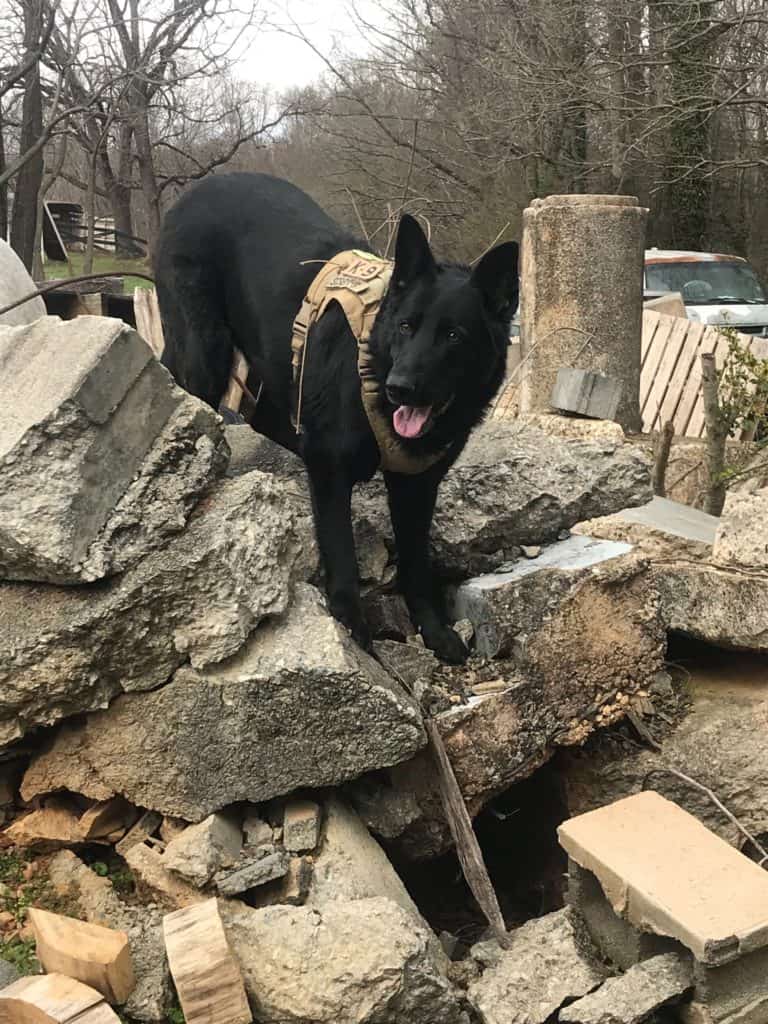
Very large breeds could present problems for HRD handlers, as they typically possess less natural stamina than smaller breeds. Medium or smaller “large” breeds (such as labs or working line German Shepherds) are the standard choice for HRD candidates. Some typical breeds found in HRD work are:
- Labrador retrievers
- German Shepherds
- Border Collies
- Golden Retrievers
- Belgian Malinois
- Springer Spaniels
- Mixed-Breeds
Selecting Your HRD Partner: Socialization
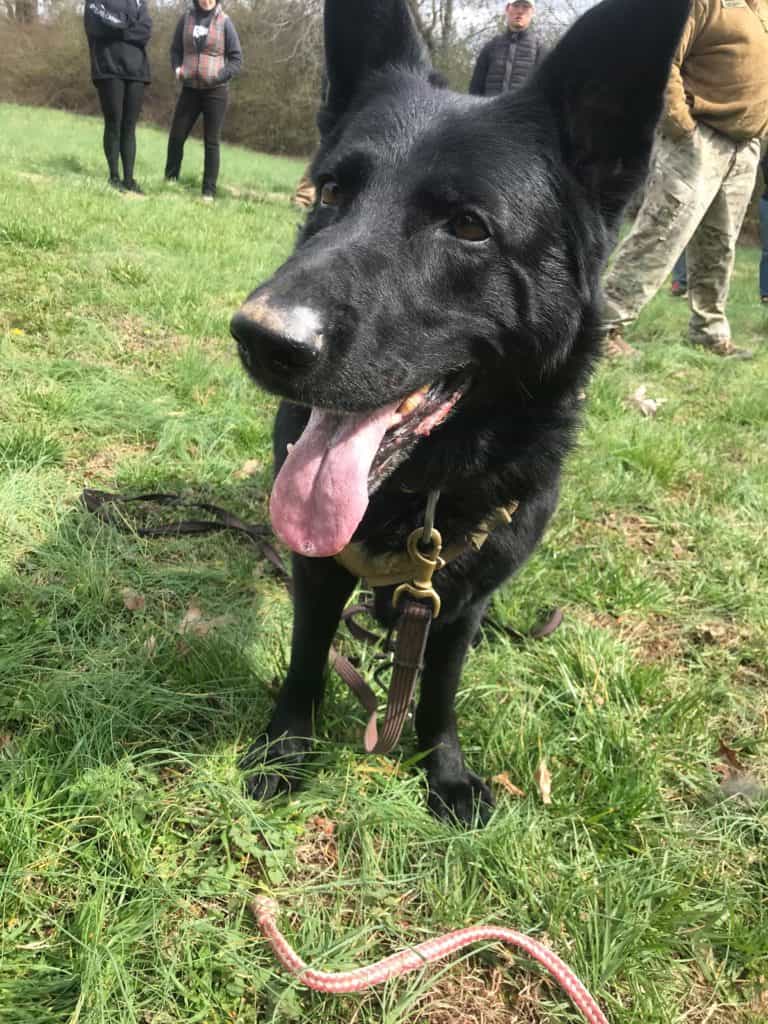
Testing a potential candidate for environmental and social stability is critical when evaluating a potential HRD candidate. Handlers may find themselves thinking, “Why would my dog need to be social when it is working independently out in nature most of the time?”
Unsocialized dogs, in general, can present pretty severe issues for their owners. Undesirable behaviors such as aggression, severe timidity, spooking and becoming overly excited are typically witnessed in unsocialized dogs. Matters become even more concerning where working dogs are involved – an unsocialized K9 can:
- Cause harm to innocent bystanders
- Cause harm to your team mates or other dogs on the team
- Forego obedience to trained odors in favor of becoming distracted by new surroundings
- Panic, and refuse to work
- Take significantly longer to desensitize to potentially frightening stimuli
You will want to test how your puppy or dog reacts when it is exposed to traffic, new people, other animals, slick floors, dark spaces and unfamiliar obstacles. If you are attempting to raise a puppy for working purposes, it is very important to socialize them well so that they remain stable in every possible environment. By practicing on obstacle courses and agility equipment, you can help boost your pup’s confidence and condition them for the physically demanding work they will face in the field.
Selecting Your HRD Partner: Search Drive
Search drive is a vital component to any sort of detection work. When selecting an HRD dog, you don’t want a dog who will look for a couple of minutes and give up – you need a dog who will search for hours, day after day, vigilantly and enthusiastically.
Search drive is typically tested using a toy that the dog likes. This can be accomplished by holding the dog back while throwing the toy into an area that is not easy for the dog to find it (tall grass, forested ground, rubble), and watching how long they will look for this toy. When testing search drive, you will want to analyze a couple of different factors:
- How long does the dog/puppy search?
- How enthusiastic are they when they are searching?
- How much ground do they cover when searching and what does their “pattern” look like?
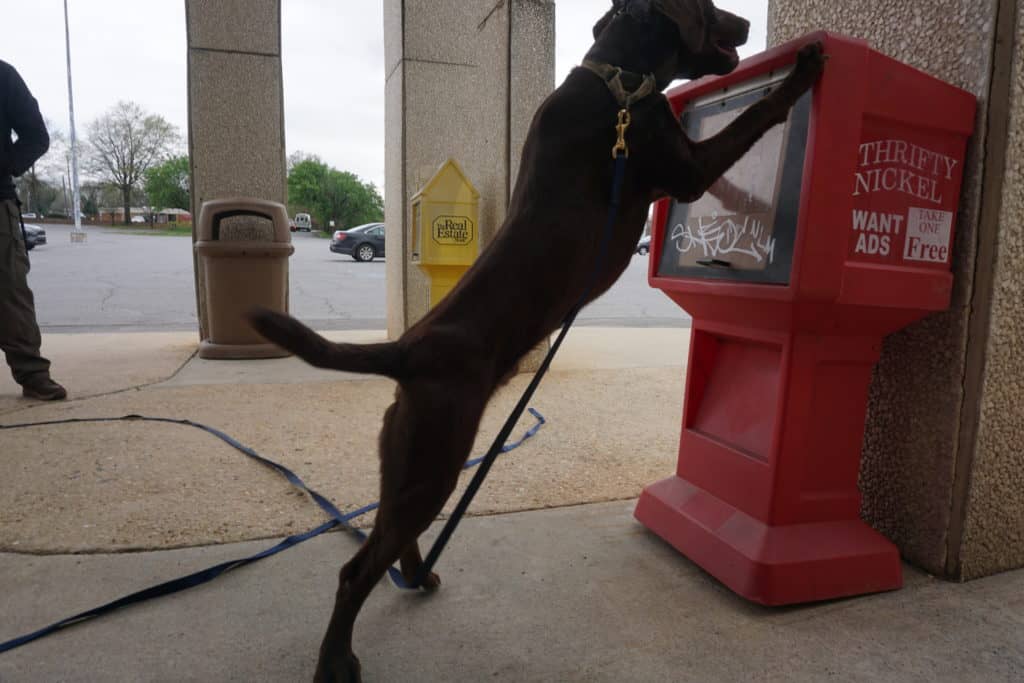
Your future HRD dog will likely be required to search for miles, so the ability to keep hunting is incredibly valuable. If you are planning on imprinting with odor inside a PVC pipe (which is typically the fastest way to do so), they will need to be willing to hunt for and play with a piece of PVC pipe. You can increase your future HRD candidate’s enthusiasm for the pipe by playing fetch with it for a bit before proceeding to throw it into the long grass or woods. The optimal candidate will not stop searching until it locates the pipe.
Selecting Your HRD Partner: Environmental Stability
An HRD K9 faces deployment in a variety of situations. Working deep in the woods, inside buildings or houses, over acreage and fields, in disaster situations, along residential developments and more are not uncommon places for searches to take place. It is critical that your future partner is 100% focused on their job regardless of where you take them.
Although socialization in the early days helps to build this, some dogs are naturally nervous and will not be comfortable working in new places. Triggers such as new sounds, smells and sights can make dogs uncomfortable, and although this can be worked through to some extent, it will make your life significantly easier if you find a dog who is already confident and focused. You can test this by using a toy or your imprinting PVC pipe, and having your dog hunt for it in a variety of places. What does their body language look like while they are hunting in new environments? How enthusiastic and focused are they?
Make sure to work indoors and outdoors, in light and in darkness, in loud and quiet environments, and on slippery floors and unstable (but safe) surfaces. Your pup should be willing to hunt for the pipe regardless of the environment, because it implies that their toy and hunt drives are so strong that they will be happy working anywhere as long as there is a toy on the other side.
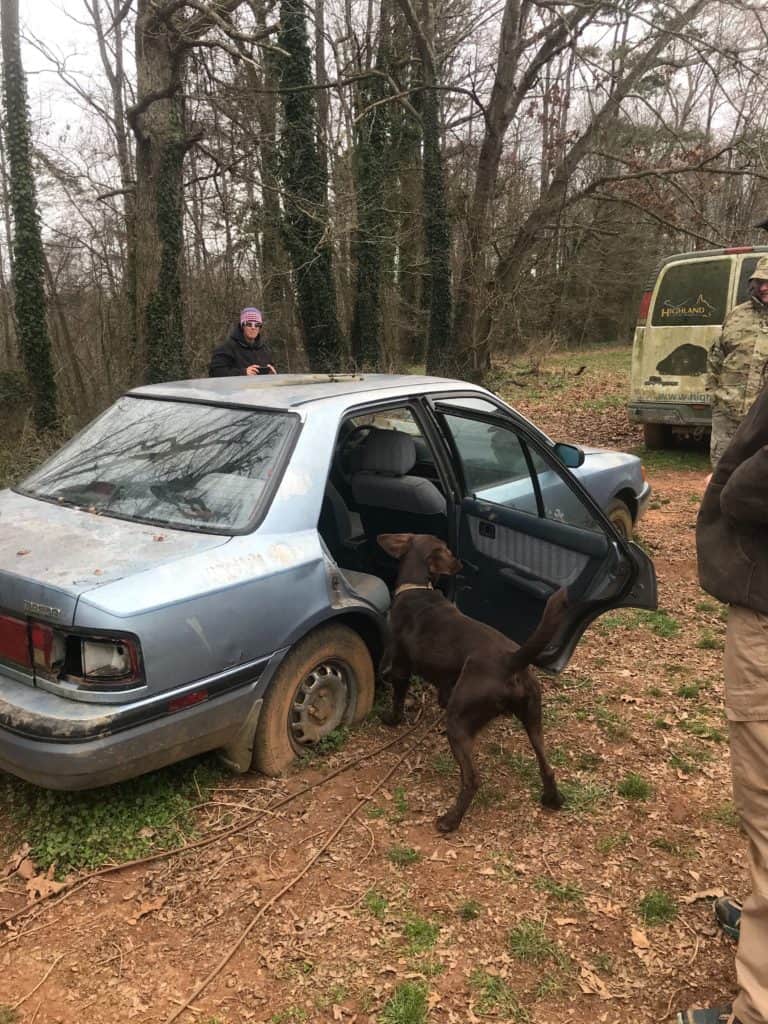
In Summary
Quality HRD teams are an incredibly valuable asset to society. They accomplish things that neither humans nor technology could do on their own by helping to bring closure to the desperate families of lost loved ones, and providing the evidence necessary to bring justice to the victims of individuals who commit heinous crimes – while stopping them from being able to commit any more. The first step in creating the optimal HRD team is choosing the right K9 partner for the job. Breed, temperament, stability, physical health, socialization and drive are all vital components of finding the right HRD dog, and will make or break your team’s effectiveness. Finding the right dog may be one of the most critical steps in the process of training an HRD K9, but once you have them, the real journey begins.
